Wilson Blade 98 18x20 Countervail Racquet Review

Summary
With the Blade 98 18x20 Countervail, Wilson adds another impressive chapter to the Blade racquet family. Originally launched in 2006 with the nCode version, the Blade 98 18x20 has evolved through many technological updates and composition tweaks. However, through all of these changes, this racquet's rock solid stability and surgical precision has not wavered. Our playtest team tested the latest version of this racquet, which is made with Countervail, a uniquely flexible carbon layer designed to minimize impact vibrations. Judging from the scores and comments of our crew, the new Blade 98 18x20 Countervail delivers on its promise to provide a dampened, low vibration feel. In fact, the highest score for this playtest was awarded for comfort. At 11.3 ounces strung, the Blade 98 18x20 Countervail is lighter than a traditional player's racquet, but as you will learn from our playtesters, this stick is no lightweight. Thanks to an RDC swingweight in the upper 320s and some effective mass north of the handle, this racquet gave our team a remarkably solid and stable ride. Suffice it to say, slices plowed through the ball like a hot knife through butter. While not every playtester warmed up to this racquet's hefty feel, our team definitely appreciated having the needed mass for powering the ball through the court or redirecting heavy pace deep into opposing territory. A minor complaint against this racquet's very dampened feel came from one of our playtesters who found the Blade too muted, which made it harder for him to feel the ball at contact. Ultimately though, when you add this racquet's stability and surgical precision to its arm-friendly feel, the Blade 98 18x20 Countervail is an awfully attractive option for intermediate and advanced ball strikers.
Wilson Blade 98 18x20 Countervail Racquet Scores
| Power | 80 |
| Control | 86 |
| Maneuverability | 77 |
| Stability | 86 |
| Comfort | 88 |
| Touch/Feel | 83 |
| Serves | 83 |
| Groundstrokes | 85 |
| Returns | 83 |
| Slice | 87 |
| Topspin | 80 |
| Volleys | 84 |
| Overall | 84 |
Groundstrokes - Score: 85
With its wonderfully solid feel and controlled delivery, the majority of our team had a positive experience with the Blade 98 18x20 Countervail from the back court. Armed with the optimal string and tension, Chris settled into quite a groove with this racquet. He explained, "I had my Blade 98 18x20 Countervail test racquet strung up with some Big Banger Original at 47 lbs, and it felt great. Having one of my favorite strings in my preferred tension range allowed me to quickly find the groove. I thought the level of control was top notch. The low tensioned poly allowed me to find easy depth and lots of spin to get my shots diving inside the lines. The racquet also felt very comfortable when set up that way. The sweetspot felt very generous, and I was able to find effortless depth with no loss in precision. This is the most I've ever enjoyed a Blade 98."
"I use the 2015 version of the Blade 98 18x20, so I felt right at home with this racquet," said Troy, who was clearly impressed with this update. "I like having total command over the ball from the baseline, and this update did not let me down. It has good stability for its maneuverable 11.3 oz weight. Ball impact felt very solid on my backhand slice, and the dense string pattern gave me the control and confidence to drive the ball deep. Although topspin isn't necessarily this racquet's strong suit, those who like to flatten the ball out will find great depth control. The feel is slightly stiffer and crisper than the previous version, but it still feels solid, with little vibration coming through. The more I hit groundstrokes with this racquet the more I was finding my groove, and I enjoyed the slightly crisper feel over the previous version."
Mark simply couldn't argue with this racquet's solid and precise feel. He said, "The first Blade 98 I played with was the K Factor version, and the only string pattern available was the 18x20, which was one of my favorite frames at that time. I brought some open patterned frames along to my first session with this new Countervail version of the Blade 98 (18x20) just in case I was too challenged with such a tight pattern. The moment I made contact with the ball I noticed a very solid and precise feel, and I never looked back from there. I did have to aim my swing in a more upward direction to get the desired net clearance, but on every subsequent session I played better from the baseline. I felt like the tighter string pattern helped keep my ball from sailing too high over the net, which can be a problem with open patterned racquets. Spin was very easy to develop off either wing, and I had great confidence when hitting my slice backhand. My weapon, if you can even call it that, is to get almost everything back, change the direction and keep the velocity in the 60 MPH range. I could tell I was in that range, and my PlaySight data backed it up."
"Surprisingly, I struggled a bit with this racquet from the baseline," said Andy, who logged copious hours with the previous generation Blade 98 18x20. "I loved the previous version of this racquet, but my groundstrokes didn't feel quite as dialed in with this update. For starters, it felt a little cumbersome coming through contact. I didn't feel like I could catch up to hard hit shots from my opponents that easily, and I often found myself late. Second, the 'feel' is more muted and dampened compared to the previous version, which left me a little disconnected from the ball as it left my strings. Furthermore, I thought the Blade 98 18x20 Countervail offered more power, and consequently less control, than its predecessor, and with the 18x20 string pattern I didn't feel like I could generate enough spin to harness some of that added pop. I wanted to like this new iteration, but unfortunately, I just never got comfortable with it at the baseline."
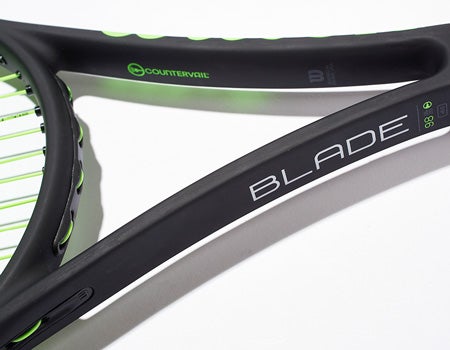
Volleys - Score: 84
The Blade 98 18x20 Countervail impressed our entire team with its stability and control at the net. Although a couple playtesters had minor complaints about the feel and weight, Mark had zero problems. He said, "This was another area where I really noticed that solid, precise feel, which must have something to do with the stability and dense string pattern. Mid-court volleys, half-volleys and chip approaches were effective and predictable. I was extremely confident with this racquet when I was anywhere near the net."
The Blade 98 18x20 Countervail proved perfect for Chris at net. He explained, "I enjoyed this racquet at net. It felt light and easy to maneuver. I could react well and punch away volleys. There was also enough pop to help me finish off the point. I felt in control when I was punching volleys deep, and I was confident enough to be very aggressive. I also liked the grip I was getting on the ball from the dense string pattern. My touch volleys were working well, and I felt pretty dialed in when looking to softly caress a volley."
Andy appreciated the stability and control at net, but the feel was a little too muted for his taste. He explained, "I had a little more success around the net with this racquet than I did at the baseline, but I still struggled with the feel. I didn't like how muted and dampened it was, so I found it difficult to use finesse when I needed to carve out tough volleys. The mass was there for good stability and easy depth, but it wasn't all that maneuverable. On the plus side, the tight string pattern did provide some nice control and the 'deader' feel that allowed me to get the ball to my intended target consistently."
Although Troy loved the control and feel, he could have used a little more maneuverability at net. He said, "The control and feel of this racquet had me feeling dialed in at net. Stability was good considering the overall weight, and the racquet didn't flutter against higher pace. With the 18x20 string pattern I felt very connected to the ball, which provided good touch and precision. I also felt comfortable feathering a drop volley or hitting deep into the court. I could have used a more headlight balance and a bit more maneuverability, especially while playing doubles. With my customized Wilson Blade 98 (18x20) 2015 racquet I have added a good amount of weight in the handle to help with maneuverability. There were times during fast exchanges at the net that I found the tip of the racquet lagging somewhat, which is likely due to me being used to racquets that are around 7-8 points headlight."
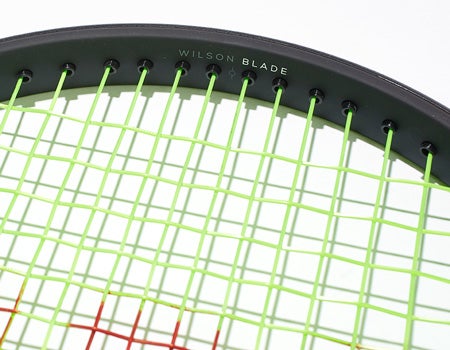
Serves - Score: 83
With its powerful and precise delivery, the Blade 98 18x20 Countervail allowed our team to paint the service box with plenty of pace and spin. The higher swingweight came with its challenges, but Andy couldn't argue with the pop and precision. He said, "I probably had my most success in this playtest when serving. The mass of the racquet allowed me to crank first serves and get them moving through the court nicely, and the tight string pattern gave me the precision I needed to find my intended targets. It did feel a bit cumbersome at times we I was trying to get it over my head quickly, but I think the mass of the racquet was more beneficial than bothersome."
Like Andy, Troy was impressed with the Blade's lively and precise response on serves. He said, "I found a good blend of power and control with this racquet on serve. With a slightly stiffer feel compared to the previous version, I had a good amount of pop on my flat heaters. The healthy swingweight packed a punch, resulting in good pace on my serves. This racquet's precision allowed me to hit my targets. I wasn't getting as much spin and kick as I do with a more open string pattern, but I like that I can really attack the kick serve with a lot of racquet head speed and still maintain good control. Some added weight to the handle would help me get some extra wrist-snap to increase the spin on my serves. Since I rely on placement more than outright power, I found this racquet to work well for my game."
On serves, this racquet's combination of spin and control was a source of confidence for Chris. He explained, "I served decently with the Blade 98 18x20 Countervail. My slice serve had ample spin, and I was able to pull my opponent off the court with it. I found an acceptable level of pace going down the T on my faster serves. When hitting second serves I really appreciated the controlled feel of the racquet. I felt confident enough to keep my swing speeds up and that enabled me to find the spin I wanted."
This racquet's dense pattern proved a bit of a hindrance for Mark when serving. He explained, "When I was serving with the Blade 98 (18x20) Countervail I definitely noticed a difference in the way the ball came off the stringbed, and although my serve improved the more I played with it, I never quite adjusted to that difference. I am just more accustomed to the feel of the 16x19 and 16x18 patterns. That said, I might apply a thinner gauge string to see what sort of a difference that would make in terms of gripping the ball, but overall, this was the part of my game that was most challenged."
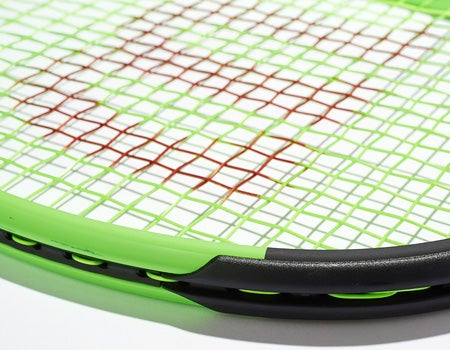
Returns - Score: 83
On service returns, the Blade 98 18x20 Countervail drew high praise for its stability, plow through and control. There was also no shortage of love for how smooth and solid this stick felt on chips and slices. Troy was impressed. He said, "This racquet's stability and plow through allowed me to hit returns deep into my opponent's court. I even found penetrating depth on compact strokes thanks to the higher swingweight. Backhand slices felt smooth, and I could keep the ball low and deep, near the server's feet. The directional control allowed me to mix up my returns with ease and keep the ball away from the net man in doubles. I found this to be one of my favorite racquets to return with, especially on my backhand side."
Andy also returned well with the Blade 98 18x20 Countervail. He said, "I really liked the racquet's control and stability on the return of serve. I could block back big first serves, knowing that the racquet would win the collision and I could find my intended targets consistently. The mass in the hoop was nice for chipping back returns deep in the court, too. I did have to be pretty conscious of how big a swing I was taking, as it was not easy to whip the Blade 98 18x20 Countervail around my body when I was a little late on a ball. All in all though, this was an effective racquet to return with."
"The Blade 98 18x20 Countervail was a fun racquet to return with," said Chris, who appreciated this racquet's control and feel. "I enjoyed taking a solid cut at the ball. I found lots of control, and I felt connected to what I was getting out of the racquet. I really liked how this racquet paired with a low tensioned poly. Not only was I getting more feel on my chip returns, I also felt more dialed in on my aggressive returns."
This racquet's beefy swingweight helped Mark plow through the ball on chip returns. He said, "My backhand chip return fit perfectly with the heavier specs of the Blade 98 18x20 Countervail, and even though the swingweight is near 330, I was also able to hit through my return off of both wings."
Overall - Score: 84
| Technical Specifications | ||
|---|---|---|
| Length | 27 in | 69 cm |
| Head Size | 98 sq in | 632 sq cm |
| Weight | 11.3 oz | 320 gm |
| Balance Point | 13.1 in 33 cm | 3pts Head Light |
| Construction | 21mm / 21mm /21mm | |
| Composition | Braided Graphite & Basalt | |
| String Pattern | 18 Mains / 20 Crosses | |
| Babolat RDC Ratings | ||
|---|---|---|
| Score | Grade | |
| Flex Rating | 65 | Range: 0-100 |
| Swing Weight | 328 | Range: 200-400 |
| Andy's Scores | |||
|---|---|---|---|
| Power | 7.7 | Serves | 8.5 |
| Control | 8.5 | Groundstrokes | 7.3 |
| Maneuverability | 6 | Returns | 8 |
| Stability | 9.3 | Slice | 8.5 |
| Comfort | 8.7 | Topspin | 7 |
| Touch/Feel | 7 | Volleys | 8 |
| Overall | 7.5 | ||
| Chris' Scores | |||
|---|---|---|---|
| Power | 7.8 | Serves | 8.2 |
| Control | 8.4 | Groundstrokes | 8.5 |
| Maneuverability | 8.1 | Returns | 8.5 |
| Stability | 8.1 | Slice | 8.4 |
| Comfort | 8.5 | Topspin | 8.3 |
| Touch/Feel | 8.7 | Volleys | 8.3 |
| Overall | 8.3 | ||
| Troy's Scores | |||
|---|---|---|---|
| Power | 8 | Serves | 8.5 |
| Control | 9 | Groundstrokes | 9 |
| Maneuverability | 8.3 | Returns | 8.7 |
| Stability | 8.6 | Slice | 9 |
| Comfort | 8.8 | Topspin | 8 |
| Touch/Feel | 8.6 | Volleys | 8.6 |
| Overall | 8.6 | ||
| Mark's Scores | |||
|---|---|---|---|
| Power | 8.5 | Serves | 8 |
| Control | 8.5 | Groundstrokes | 9 |
| Maneuverability | 8.5 | Returns | 8 |
| Stability | 8.5 | Slice | 9 |
| Comfort | 9 | Topspin | 8.5 |
| Touch/Feel | 9 | Volleys | 8.5 |
| Overall | 9 | ||
Playtester Profiles
Andy: Open level all court player with a semi-western forehand grip and a two-handed backhand. Andy currently using a Yonex EZONE DR 98.
Chris: 5.0 all-court player currently using the Babolat Pure Drive Plus. Chris uses a full-western forehand grip, has a fast swing style and hits a one-handed backhand.
Troy: 5.0 lefty all-court player with a full Western Forehand and a two-handed backhand. Troy currently plays with a Wilson Blade 98 18x20.
Mark: 5.0 lefty all-court player with a one-handed backhand. He currently plays with the Babolat Pure Aero Tour.

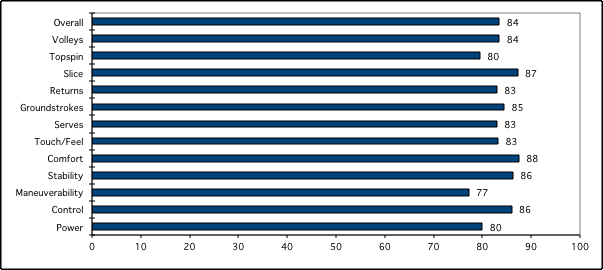


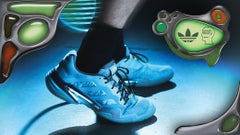
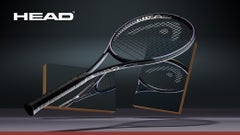


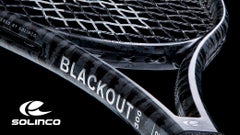


Likes
Mark - "I am a function over form person, but I do like the cosmetic of the new Blade 98 Countervail frames. Physically, the Blade 98s have always been among my favorites. Many other racquets that are similar in terms of weight and head size lack a substantial swingweight, which means I usually need to add weight to the hoop. Not so with the Blade 98 18x20 Countervail. With swingweights in the 320s, I am going to swing a stable feeling low 11 oz. racquet. This particular iteration felt a little more muted to me compared to previous examples of the Blade 98 (18x20), which helped make even a full bed of monofilament pretty comfortable on the arm."
Chris - "I liked the feel, control and overall response of the Blade 98 18x20 Countervail. This was the best Blade 98 I've hit to date."
Andy - "Good control and stability. More power than the previous version."
Troy - "The standout feature was control, which gave me trust in where the ball was going to land. I found a little more forgiveness in this racquet compared to my old Wilson Six.One 95 (18x20)."
Dislikes
Mark - "Personally, I would probably add some weight and experiment with different string/tension configurations, but that is not really a knock on the frame itself. I am happy enough with it to where I would take the time to modify it a little."
Chris - "I thought long and hard about whether I'd change anything about this racquet, but there are no dislikes for me. I played very well with it and really enjoyed the playtest."
Andy - "The feel was too muted and dampened, leaving me too disconnected from the ball at impact. I also found the racquet to be sluggish and not very spin friendly."
Troy - "In stock form, I would have preferred more weight in the handle to help with maneuverability and to make it closer to the weight and balance of my typical stick. Although control is very good with this racquet, it isn't quite at the level of my old Wilson Six.One 95 (18x20)."
Comparing the racquet to others they've tried, our testers said:
Mark - "If we are strictly going on other low 11 oz. racquets paired with tight 18x20 patterns, the selection list will look like my hairline -- thinned out. The Babolat Pure Strike (18x20) is comparable and at an average weight difference of 0.2 oz., the Prince Textreme Tour 100P is in the conversation. I have to say the newer example of the Pro Staff 97S is similar with its 18x17 pattern and muted feel."
Chris - "The last Blade 98 18x20 I tested extensively is now two versions old. This latest version blows that one completely away. I did not get enough time to test the 2015 version closely with this update so cannot comment there. Compared to other brands, I'd consider the Prince Textreme Tour 100P and Yonex Duel G 97 310. Both have very similar static weights but have lower swingweights. My test Blade 98 18x20 Countervail had a swingweight of 330, which gave it a very solid feel compared to most other 11.3 oz. racquets available. The Head Graphene Touch Speed Pro swings similarly but had a lower powered and even more control oriented feel."
Andy - "I've been a big fan of the Blade line in the past, but unfortunately I think this iteration takes a step backward in terms of performance. While the Blade 98 18x20 Countervail may be a bit more comfortable and more powerful than the version it replaces, the muted feel eliminates the exceptional responsiveness that I really liked in past versions."
Troy - "There is definitely a more modern, crisper feel compared to the 2015 version, which has a bit more flexible and classic feel to it. For me this Blade 98 18x20 Countervail sits somewhere between the Wilson K Blade 98 and the 2015 Blade 98 (18x20). There is a firm feel in this new update, similar to the K Factor version, but with the solid dampened feel I found with the 2015 version."